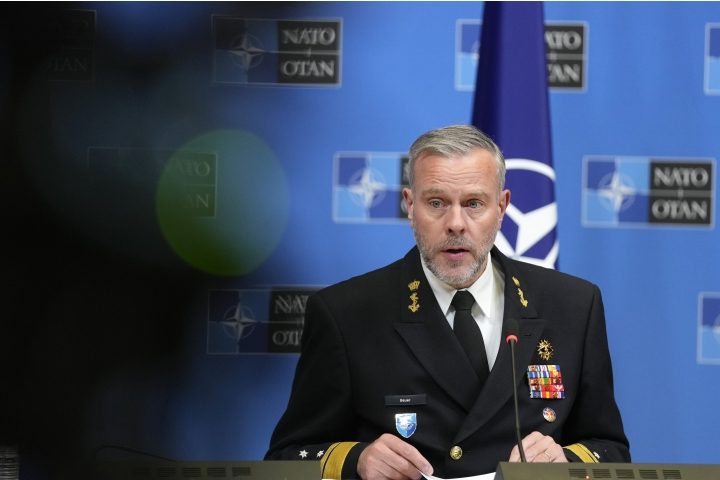
Are the powers that be gearing up for full-scale war with Russia?
According to NATO’s chief, firms and civilians in the NATO bloc should prepare themselves for war with Moscow, which he anticipates will take place within the next 20 years.
Dutch Admiral Rob Bauer, the chair of the NATO Military Committee, said a war with Russia would call for the mass mobilization of civilians and a major expansion of the bloc’s industrial capacities, as reported by Russia Today.
“We have to realize it’s not a given that we are in peace. And that’s why we are preparing for a conflict with Russia,” Bauer said after a Thursday meeting of NATO defense chiefs in Brussels. “It starts there. The realization that not everything is planable and not everything is going to be hunky-dory in the next 20 years.”
He added, “You need to be able to fall back on an industrial base that is able to produce weapons and ammunition fast enough to be able to continue a conflict if you are in it.”
These sentiments have been echoed by the leaders of NATO member states. Earlier this week, the prime minister of Estonia, Kaja Kallas, said that the alliance has between three to five years to prepare for a conflict with Moscow.
In remarks to The Times, Kallas warned that the time frame for war between Russia and the West “very much depends on how we manage our unity and keep our posture regarding Ukraine.”
“What Russia wants is a pause, and this pause is to gather its resources and strength. Weakness provokes aggressors, so weakness provokes Russia,” Kallas added.
British Defense Minister Grant Shapps has also given a similar summation of the situation, predicting a major war between the West on one hand and Russia, China, Iran, and North Korea on the other. Describing the situation with Russia and its allies as an “existential threat,” Shapps has pressed the U.K. and Western nations to heighten their defense spending.
There are several tension points that contribute to the potential of war between the Western Powers and Russia. The conflict in Ukraine only highlights the delicate state of Western-Russian relations.
The expansion of NATO (North Atlantic Treaty Organization) into Eastern Europe and former Soviet states has been a point of concern for Russia. The perceived encroachment of NATO toward Russia’s borders has raised serious tensions between the West and Moscow.
As the Ukraine war demonstrates, territorial disputes (such as in Crimea and Eastern Ukraine) are likely to continue being a major point of contention. But the relationship is nonetheless a complex one, as the two sides are heavily dependent on one another economically. In particular, Europe’s dependence on Russian oil and gas means conflict with Moscow cannot be considered lightly.
As The New American previously reported, Ukraine this week conducted several operations in its counteroffensive against Russia, including deploying drones against Russian oil facilities, destroying a key Russian spy plane, and using hackers to obtain construction plans for over 500 Russian military sites.
In seeming preparation for the possibility of war with Russia, NATO is set to hold its largest exercise since the Cold War, using 90,000 troops to rehearse how American forces could reinforce European allies along the Russian border.
As Reuters reports:
Some 90,000 troops are due to join the Steadfast Defender 2024 drills that will run through May, the alliance’s top commander Chris Cavoli said on Thursday.
More than 50 ships from aircraft carriers to destroyers will take part, as well as more than 80 fighter jets, helicopters and drones and at least 1,100 combat vehicles including 133 tanks and 533 infantry fighting vehicles, NATO said.
Cavoli said the drills would rehearse NATO’s execution of its regional plans, the first defence plans the alliance has drawn up in decades, detailing how it would respond to a Russian attack.
The second part of Steadfast Defender will focus on the quick deployment of NATO forces to Poland. The drills will also take place at locations in the Baltic states (which are seen as the most vulnerable to a Russian attack), Germany, Norway, and Romania.
“Steadfast Defender 2024 will demonstrate NATO’s ability to rapidly deploy forces from North America and other parts of the alliance to reinforce the defence of Europe,” NATO said in an official statement.
The last military exercises to be carried out with the same or a greater scale took place during the Cold War: Reforger had 125,000 participants. In 2018, NATO organized a somewhat smaller exercise — Trident Juncture, which had 50,000 participants.
As tensions at several geopolitical hotspots rise, including in the Middle East, the likelihood of conflict with Russia appears to become ever-greater. But would such a war arise out of legitimate defense and self-preservation motives for the West, or would it be a case of warmongering by the international military establishment?




